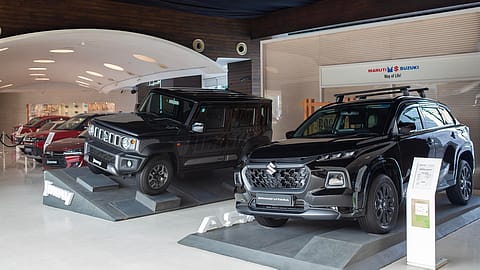SUVs steer India’s auto market ahead in May as PV sales decline, SIAM data shows
The sales of passenger vehicles dragged because of a 12.2% drop in passenger car volumes

India’s automobile market witnessed a tale of two segments in May 2025: while compact and mid-sized passenger cars slid into reverse gear, utility vehicles (UVs) continued their forward march. According to the latest data released by the Society of Indian Automobile Manufacturers (SIAM), PV sales dipped 0.8% year-on-year, pulled down by a 12.2% drop in passenger car volumes. Yet, UVs stayed resilient with 7.6% growth, fuelled by new launches and continued rural demand. Backed by repo rate cuts and hopes of a good monsoon, the sector is eyeing better traction in the coming months.
This contrasting performance reflects evolving consumer preferences, with SUVs increasingly becoming the default family vehicle. UV sales touched 1,96,821 units in May 2025, up from 1,82,883 units a year earlier. Manufacturers like Mahindra & Mahindra, Hyundai, Kia, and Toyota drove the momentum with robust volumes across models like the Scorpio, Creta, Seltos, and HyCross.
In contrast, passenger cars registered 93,951 units sold in May 2025, sharply down from 1,06,952 units last year, indicating continued pressure on small car demand amid rising input costs and an urban shift to SUVs.
Maruti Suzuki, India’s largest carmaker and the only major carmaker to offer small cars, has flagged that the automotive industry cannot grow without the small car market growing. RC Bhargava, chairman, Maruti Suzuki, told Business Standard in an interview that the small cars need to grow at 8–10% annually to keep the sector afloat. At the company’s full-year results meeting, Bhargava said it is a fallacy to think that the decline in sales of small cars and the growth of the SUV market is a result of changing customer aspirations or people wanting to buy big cars.
At the media briefing for the company’s performance in May, Partho Banerjee, head of sales and marketing, said entry-level cars continue to struggle in the market. “There is no dearth of enquiries in the entry-level cars, but the problem is with the conversion of those enquiries into sales. Sometimes there is a problem in finance. Sometimes there are problems in the profile of the buyers,” explained Banerjee. The sales of the likes of Alto, S-Presso, etc., part of its entry-level portfolio, showed a drop to 6,776 units in May, compared to 9,902 units last year.
Two-wheelers, the largest segment by volume, saw a modest 2.2% growth with 16,55,927 units sold in May 2025. Within this, scooters outpaced the broader segment with a 7.1% rise, while motorcycles remained flat year-on-year. Mopeds declined by 7.7%.
The three-wheeler segment contracted by 3.3%, largely due to a 40.1% slump in e-rickshaw sales and a 41.3% fall in e-carts, even as traditional passenger carriers held relatively steady.
Despite the mixed picture, industry insiders remain cautiously optimistic. “All vehicle segments posted stable performance in May. The RBI’s repo rate cuts and an above-normal monsoon forecast should help boost sentiment,” said Rajesh Menon, Director General, SIAM.
Year-to-date (April–May) figures reinforce the SUV dominance. UV sales rose 9.8% in the first two months of FY26, while passenger cars dropped 9%. Exports also climbed, with a 22.2% increase in PVs and a 29.6% rise in three-wheeler shipments.
As India’s auto market steadies after a volatile FY25 close, the real test will be sustaining rural demand and converting the monetary tailwinds into retail acceleration.


